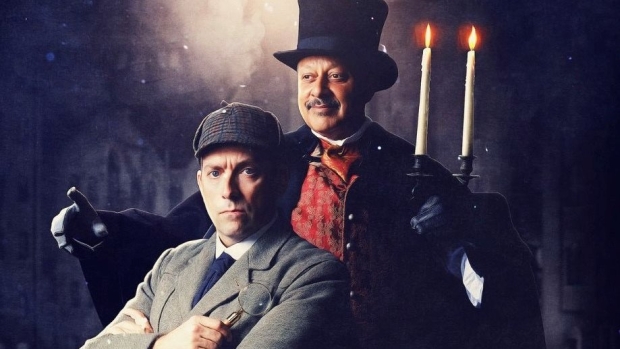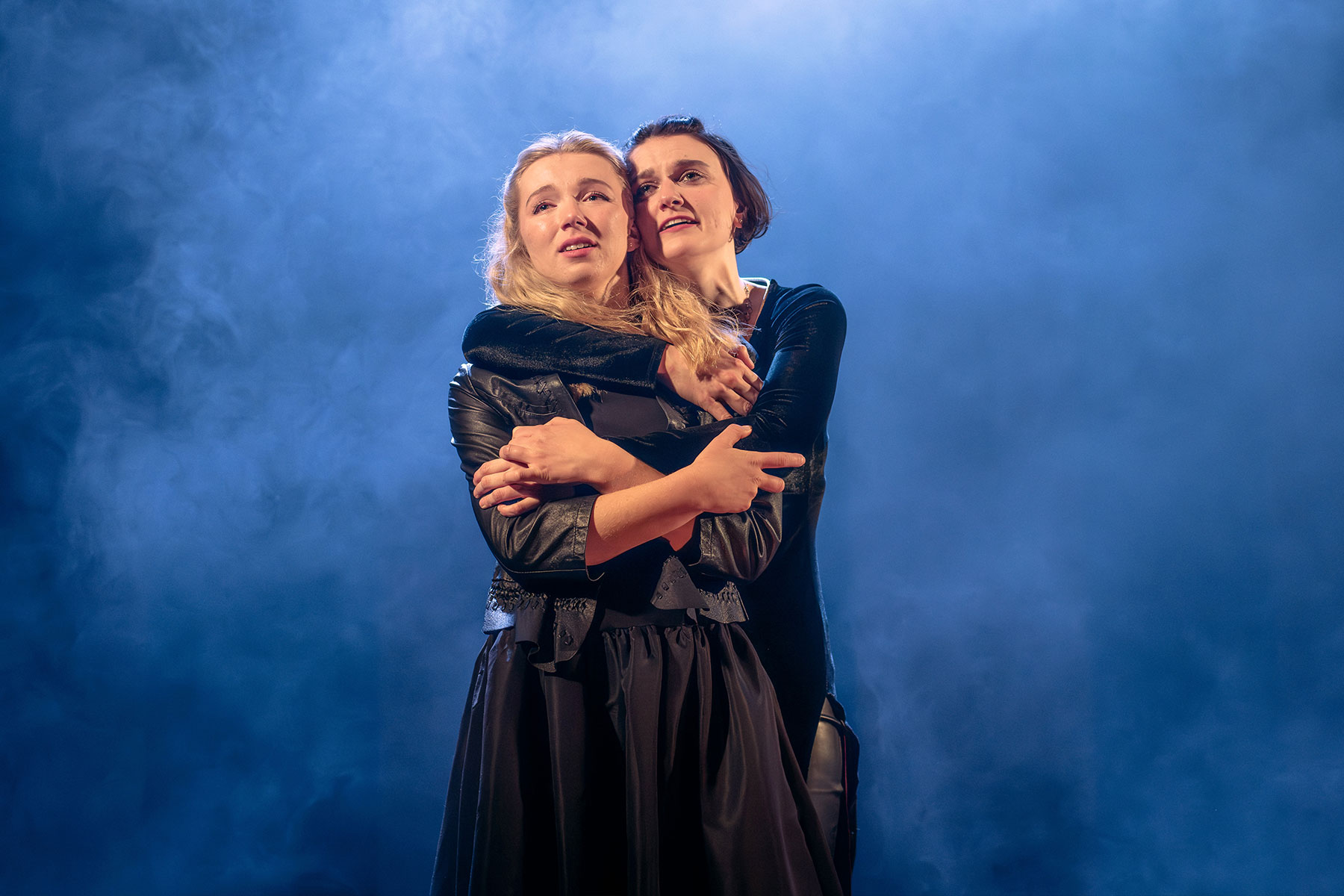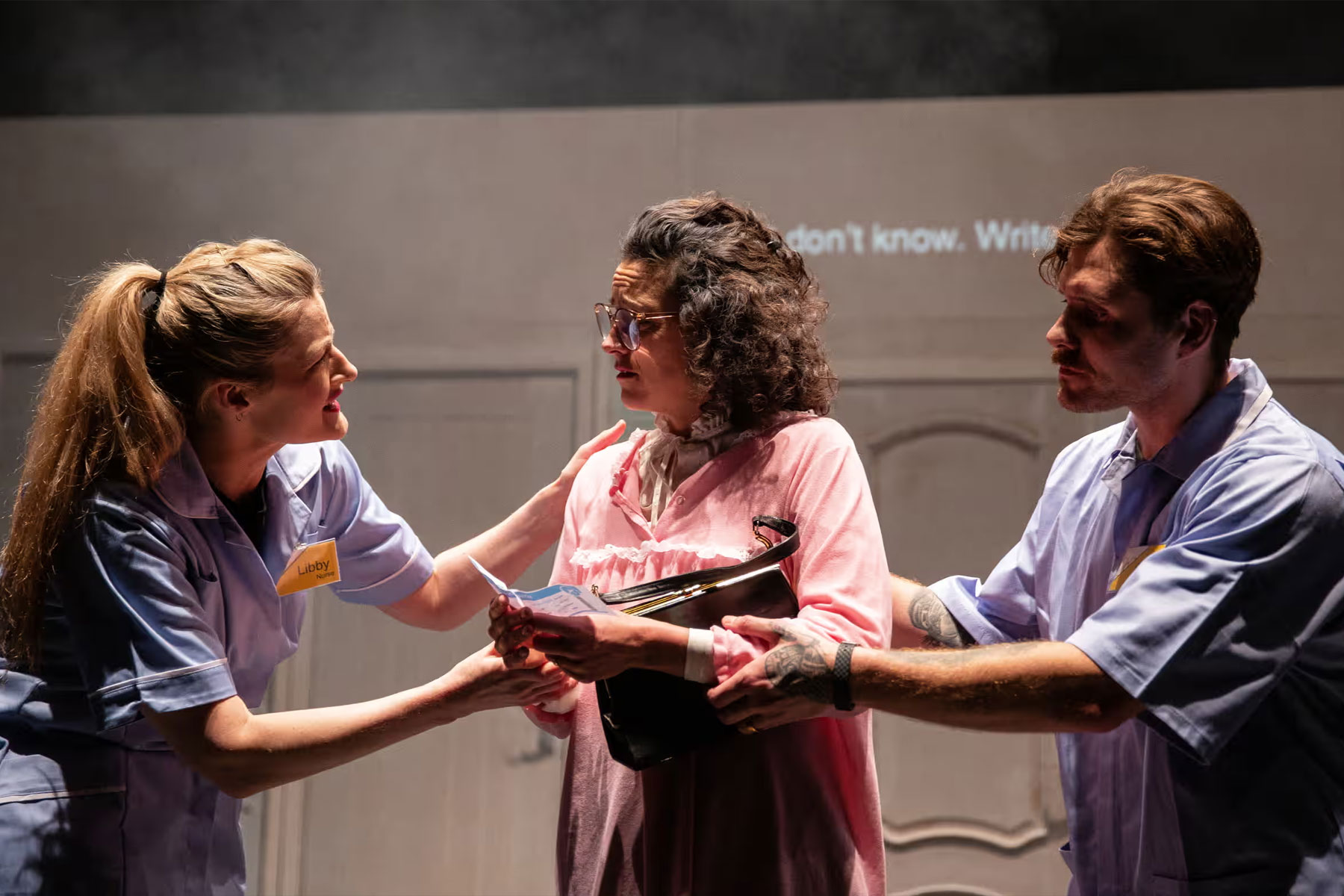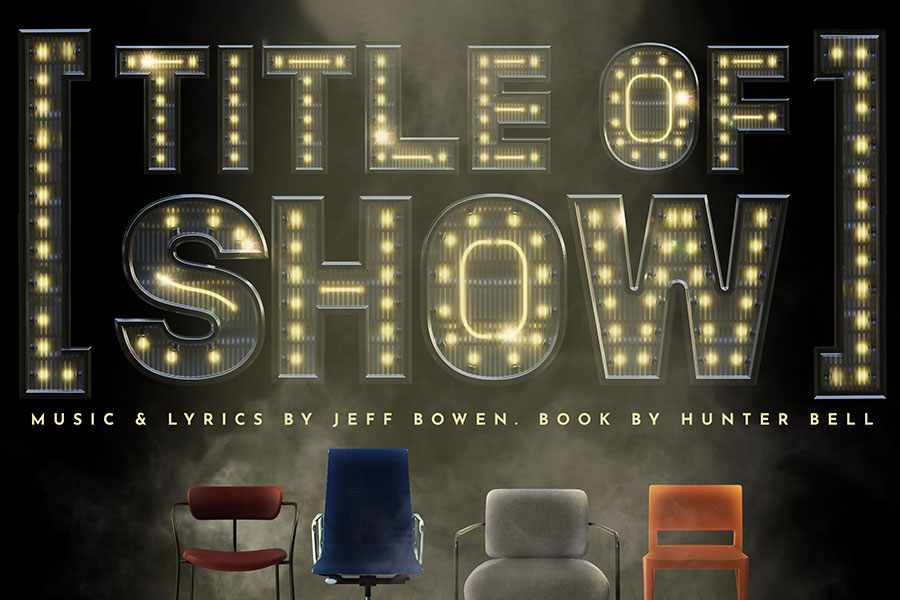”A Sherlock Carol” at the Marylebone Theatre – review
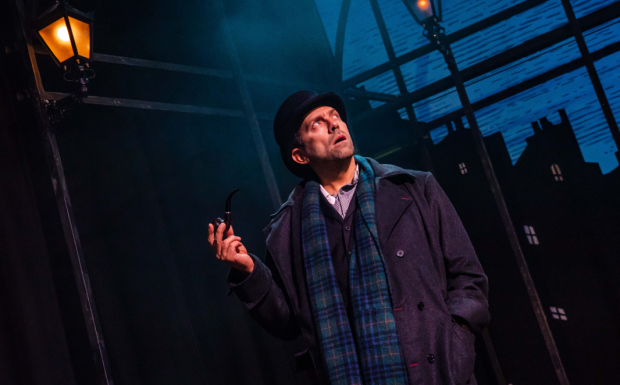
© Danny Kaan
One of London’s newest theatres opened its doors in September after an ambitious refurbishment and rebranding. Previously called the Steiner Hall, now the Marylebone Theatre, the space has transformed from a community venue to a medium-scale producing theatre. A Sherlock Carol is the second play at the venue, after its ambitious first show, Dmitry and, as the title suggests, it follows the plot of A Christmas Carol, except with Sherlock Holmes as its protagonist instead of Scrooge.
A Sherlock Carol is more modest than Dmitry, with a cast size of six as opposed to the former’s 17, and a running time of 2 hours 5 minutes with the interval. The show transfers from Off-Broadway, where it was a New York Times Critics’ Pick last Christmas (it is back for a second season in New York this year in parallel with its London run). Given the Marylebone Theatre’s proximity to Sherlock Holmes’ house at 221B Baker Street, a mere two-minute’s walk away, it seems fitting to tell a story about what might have appeared to be a spurious combination of two classic characters in any other theatre. In fact, the show feels like it might have been written for the Marylebone.
We open with the cast narrating the story – “Moriarty was dead”, they tell us, “to begin with…” While in Conan Doyle’s writing, Holmes and his rival Moriarty famously die at Reichenbach Falls, here Holmes (played by Ben Caplan) survives. A new problem arises – he may have defeated his greatest adversary, but now the deerstalker-sporting sleuth’s life has no meaning. Holmes, like Scrooge in A Christmas Carol, claims he does not believe in ghosts – until he finds himself haunted by Moriarty’s death.
Caplan’s shaking hands and pained expressions throughout the opening moments of the show are a poignant and truthful exploration of trauma; his tired eyes seem to have seen death. He takes us on a real journey with Holmes, from a broken man to someone who slowly but surely rediscovers happiness and meaning in his life.
Like Holmes’ mental state, an eerie darkness engulfs the space – spooky music and a ghostly voice are heard all around the auditorium, popping up in unexpected places. A blue fog blows through dark, wrought-iron railings around the stage and throws shadows under Victorian streetlamps. Incidentally, some of the shadows are so dark that they obscure the audience’s view of the performers. A jolly, grown-up Tiny Tim (Damian Lynch) asks Holmes to investigate the death of his Patron, Ebenezer Scrooge, to which Holmes replies with a very funny ‘Bah’ – though eventually agrees to solve the mystery.
At its core though, this is a classic Christmas story and not a murder mystery. The appeal of the writing and the production comes from the homely, well-loved Victorian world of A Christmas Carol; a fireplace is wrapped in Christmas decorations with melted candles on its mantelpiece, while a shop stall is filled with Victorian knick-knacks. The misanthrope (in this version, Holmes) rediscovers his Christmas spirit through the usual formula of kindness, generosity, and compassion. One scene sees the cast switch between colourful, caricature-ish characters in rapid succession, while Holmes stands in the centre, moaning. As he drags his feet, lost and broken, the rest of the company bound around him with warmth, humour, and passion for life which keeps the energy up and balances out the darkness.
There is a lovely sense of space and openness throughout the production. The ensemble narrates the story out to the audience, and the backdrops reach off into a horizon which deepens the back of the stage. Large gaps in between the railings act as open doorways and windows through which the actors move between different times and places. The costumes silently tell their own stories about the many different characters the actors switch between – a poor young girl’s overcoat is filled with muddy stains where the hem drags on the ground, and Holmes’ glamorous love interest (Rosie Armstrong) reminisces how she built her way up from rock bottom and wears a fitted wine-coloured jacket with gorgeous lace detailing down the front. There is care and thoughtfulness in the details.
But though the production is well-designed, it feels predictable. A lot of effort has gone into creating a Christmassy atmosphere, and Caplan’s interpretation of Holmes is praise-worthy, but the story is bogged down in clichés and the murder mystery aspect doesn’t quite manage to be mysterious. It’s fun and festive for sure, but clings to common tropes with an unwieldy stubborness.





